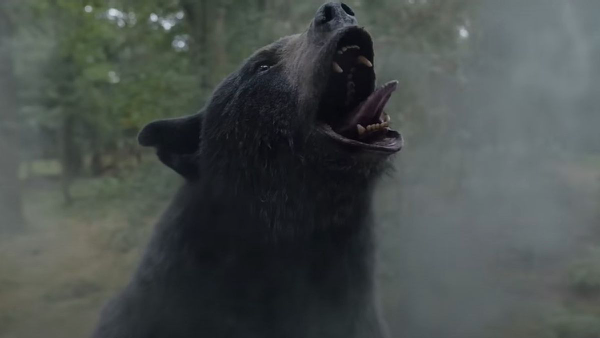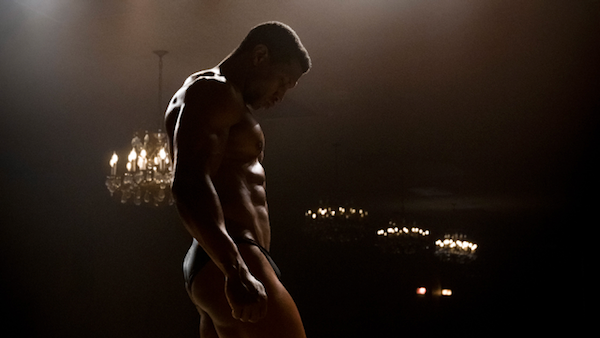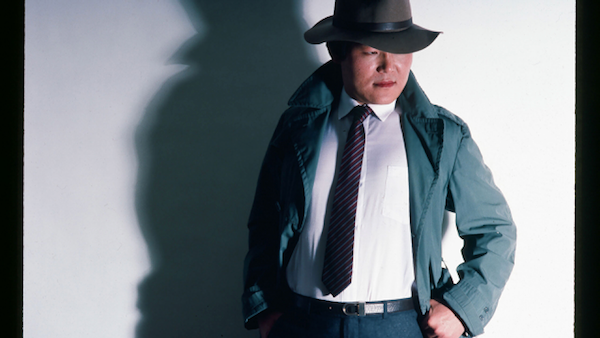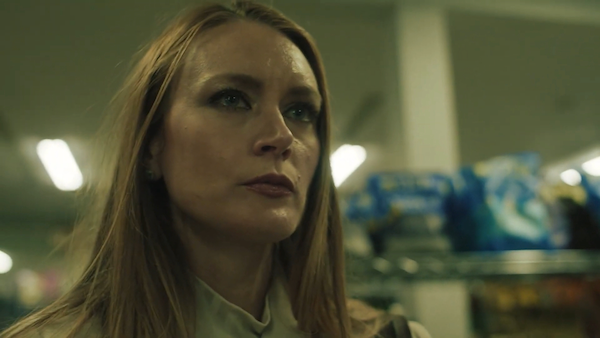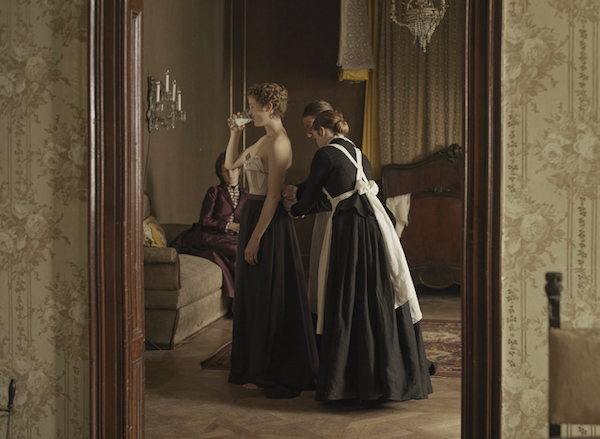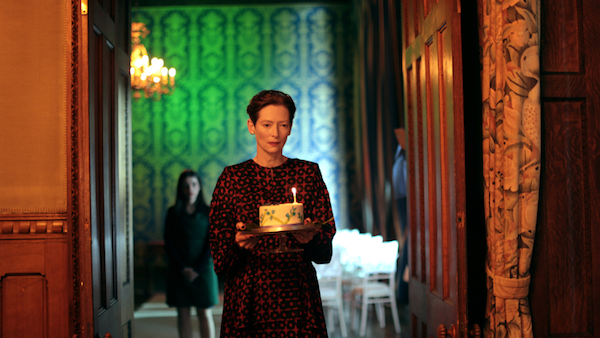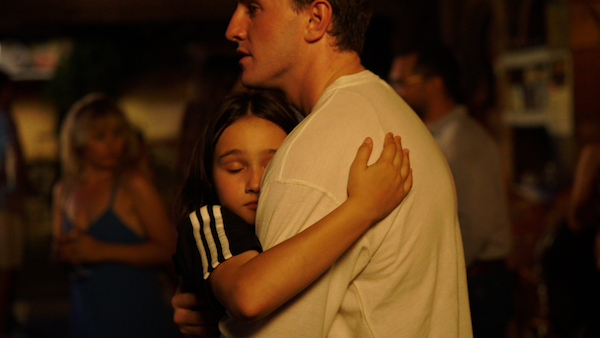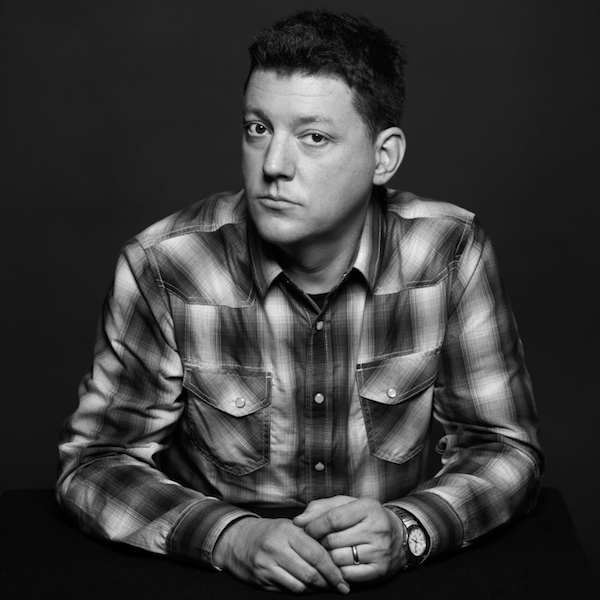
Interview by Greg Carlson
Emmy award-winning filmmaker Chris Brown has directed, produced, and/or edited features and documentaries including “Fuego,” “Sylvie of the Sunshine State,” “Songs of Wood & Steel,” “Cries of Our Ancestors,” “Let Them Eat Dirt,” “The Providers,” and “A Thousand Mothers.” Brown’s “The Other Kids” won multiple awards internationally and was hailed as “genuine and relevant” by Variety and “extraordinary” by the San Francisco Examiner.
Greg Carlson: How did the movies come to be a valuable part of your life?
Chris Brown: As an only child raised in the 80s, I was partially raised by TV. For my generation, TV was the background noise of our life. But the first thing I remember that really grabbed me – at the age of five – was an accidental glimpse of the 1935 film “Werewolf of London” starring Henry Hull.
My parents had brought me along to a party where I was the only kid and I ended up on the couch, curled up in front of the TV. As the host flipped through the channels looking for something for me to watch, she landed on an image of a man whose hands were transforming into hairy paws.
What a perfect moment! I’d never seen anything like it. This turned out to be a key moment in my life. For the rest of grade school, I scoured the weekly TV listings for horror films, organized my weekends around them, began collecting horror anthologies, subscribed to “Famous Monsters of Filmland,” everything.
Because we didn’t have a VCR, I would tape-record the audio of films playing on TV, so that I could memorize the dialogue. I had a huge carrying case for these tapes and would lug it with me whenever my family would go on trips. Total nerdsville.
GC: I love the technique of holding a cassette recorder up to the TV speaker. Do you think you became a stronger visual storyteller because you had to re-imagine the visuals in your mind?
CB: That’s an interesting question. I think by being able to scrutinize sound without having access to picture you do become keenly attuned to every dimension of the aural landscape. There are certain films from my childhood that I can still recite verbatim, complete with dialogue, music cues and sound effects. As a filmmaker, that attention to audio is terribly important to me.
GC: In addition to watching old horror films on TV, one of the ways our generation learned about movies was by looking at the still images in library books before we ever got to screen certain titles.
CB: Absolutely. And some of those images can confound you as a kid because they were actually production stills rather than frame grabs.
GC: I love that.
CB: Me too. I would spend hours making pencil drawings of those stills, copying those images of Lon Chaney or Bela Lugosi or Boris Karloff into my notebook.
GC: I’ve got one sketch pad that I filled with drawings of Dracula, blood dripping from his fangs. I obsessively drew King Kong over and over.
CB: We would have been friends in grade school. Can we talk about how amazing the original “King Kong” is? I remember watching it early one morning with my dad. It’s just so beautifully made in every aspect. And like so many horror films of that era – “Frankenstein,” “The Mummy,” “The Wolf Man” – you end up rooting for the monster. The creatures were portrayed with such humanity and sympathy and heart – unlike the creatures of later horror films where the monster is nothing but a faceless killing machine.
GC: Did your parents encourage you to pursue a life in the arts?
CB: Art, music, film, and literature are important to both of my parents, so they helped plant the seed of filmmaking. I don’t think they had any idea that I would eventually go into film professionally, but at a certain point I think they realized that there was no stopping me.
Once they saw what filmmaking meant to me, I had their full support. I was a Super 8 kid, shooting movies from the age of ten. My dad was my first cameraperson and my mom was my first actor — Ha!
GC: When you began collecting films, were you focusing on anything in particular?
CB: When I finally convinced my parents to get a VCR, I would tape film after film. Always on the worst quality so I could fit three – sometimes four! – movies on a tape. I didn’t know yet about the reduction in quality. More movies per tape seemed like a good plan to me.
There was a time in the 90s and 2000s when a place like Le Video in San Francisco and Kim’s Video in New York had just about every title you could possibly desire. In those pre-Amazon, pre-streaming days, certain films were impossible to find, so going to a place like Kim’s felt like going to Disneyland. On one trip to New York, I remember coming home with a backpack full of Dreyer and Cassavetes titles I had previously only read about. Like so many of us, my collection reflected my own quirks and idiosyncrasies.
GC: I love that. No two collections are exactly the same.
CB: Yes, even if we all have “Raiders of the Lost Ark” and “E.T.” on several different formats.
GC: Isn’t it a challenge to pick a favorite Spielberg? Choosing between “E.T.” and “Jaws” is difficult for me.
CB: “Jaws” is one of my wife Jill’s desert island films. She can recite every line. Isn’t the Carl Gottlieb book great?
GC: I love it. “Making of” books are catnip.
CB: Which one is your favorite?
GC: Too many! Along with “The Jaws Log,” I love Harmetz’s “The Making of The Wizard of Oz,” Sammon’s “Future Noir,” Harris’s “Pictures at a Revolution,” Rodriguez’s “Rebel Without a Crew.”
CB: Glenn Frankel’s “Shooting Midnight Cowboy” is beautiful. And I’m sitting just inches away from my copy of “Rebel Without a Crew.”
GC: That one could make anyone a believer.
CB: For sure. I would also place Rick Schmidt’s “Feature Filmmaking at Used-Car Prices” at the top of the list of books about filmmaking. Rick’s book gives you the confidence to get out there and do it. He takes the sting and intimidation factor out of the equation. Rick is actually a dear friend and mentor, and he is as inspiring in real life as he is in his work.
GC: What cemented your decision to pursue film as a vocation?
CB: I seized the family Super-8 camera when I was nine and made all kinds of little movies after school and on weekends with my friends and family members. By seventh grade, I knew that this was what I wanted to do with my life.
The funny thing is that even after making so many of my own little movies, I had no understanding of what a director actually did until I saw “The Making of Raiders of the Lost Ark” on TV. Since I had already seen “Raiders” a million times, I was perfectly primed. And since Spielberg was my hero, it was only appropriate that he should be the one who showed me the way.
GC: Did you study film and filmmaking in college?
CB: I did. As a high-schooler, I took some summer film classes at the California College of the Arts in Oakland, then went on to study film production at San Francisco State University. Although I entered college with totally mainstream tastes, college opened my eyes to international cinema, underground cinema, film history and theory – the depth and breadth of the art form. It was invaluable. The best part of film school was that I met a group of dear friends there. We still help each other out on our work!
GC: For many filmmakers who came of age during the rise of Sundance, there were some encouraging resources for creators of independently-produced and outsider features. My eyes bugged out when I read Pierson’s “Spike, Mike, Slackers, & Dykes.” And then there was the eventual transition from celluloid to digital.
CB: I perversely made my first feature on 16mm. Video existed as an option, but at the time I didn’t think it matched film’s quality. My film school pals and I pooled our money and bought a Moviola flatbed editing system. At the time my attitude was “celluloid or die.” Now I can’t imagine being surrounded by trim bins, or searching endlessly for little frames. Oh my god.
GC: What are some of the titles in your film collection?
CB: Many of the usual suspects, I guess. Truffaut, Cassavetes, Kubrick, Scorsese, Mike Leigh, Spike Lee, Elaine May, Chris Marker, Charles Burnett, Shirley Clarke. If you haven’t seen “Portrait of Jason,” lately, you should catch it as soon as possible. I can’t take my eyes off it. I always have to watch it to the end. I feel the same way about Scorsese’s “Casino.” If I happen upon it on TV, I end up watching it until the end, even though I own the thing! It’s just so gorgeous, from frame to frame, shot to shot. What a lesson in filmmaking and film sound. Is there any filmmaker who uses music more effectively than Scorsese?
GC: He’s on a short list. Always the right song for the right moment.
CB: I should add Spike Lee’s “Do the Right Thing” to the list of landmark movies. That film was a seismic event in my life. As was Cassavetes’s “Faces.” A few films rock you so hard you never get over them.
GC: Are there recent films you have liked?
CB: Oh, absolutely. I loved “Tár” and “Everything Everywhere All at Once.” Todd Field is such an interesting filmmaker. “Little Children” is a perfect adaptation of a book I also loved – true to the source but wonderfully cinematic.
GC: Don’t you get the feeling that when Field was on “Eyes Wide Shut,” he was just a sponge soaking up as much as possible from Kubrick?
CB: Our Nick Nightingale! He casts some of that same jittery Kubrickian spell over his own work.
GC: I was so sorry to miss you when I took the “Vertigo” tour in San Francisco.
CB: Me too! I can’t believe that we’ve talked this long without mentioning Hitchcock. When I was a kid, Hitchcock films were so accessible. As a nerdy high-schooler, I would actually invite friends over to watch Hitchcock’s movies on his birthday! Egads. Maybe I should have gone outside more.
GC: The first Hitchcock film I saw was “Psycho.” When I was a kid, I begged my mom to let me watch it on TV. She warned me that it might be too intense, but gave in to my pleading. It caused a few nightmares, but so worth it. The shower scene is remarkable, but it was Arbogast on the staircase that lodged in my brain. That movie was from another world.
CB: Oh, man, that Arbogast staircase scene is a clinic in filmmaking. I wrote an entire paper on that scene when I was in school. I’m sure you have seventeen copies of “Hitchcock/Truffaut.” Another essential filmmaking bible. I look forward to talking Hitchcock next time you visit San Francisco.
GC: I’ll meet you in the Tonga Room at the Fairmont.
CB: Perfect. See you there!
